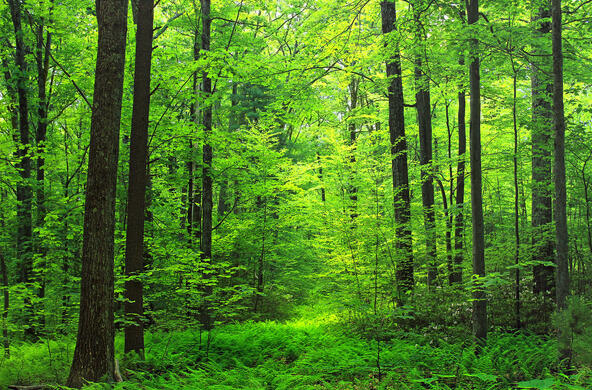
Does your property contain a patch of forest? When managing your woodland, resist the urge to keep things tidy. Dead and dying trees are a healthy part of forest ecosystems.
Ecologists call standing dead trees snags. Many of us have heard woodpeckers foraging on a snag; insects abound in their decaying wood. The cavities woodpeckers leave behind provide essential shelter to a range of animals, including honey bees, flying squirrels, and a variety of birds.
Maybe you’ve been fortunate enough to see a screech owl, an American kestrel, or a wood duck peering out from a hole in a snag. Did you know that at least 85 species of North American birds rely on these habitats? Many prefer the shelter provided by cavities in large old trees, yet they are becoming increasingly rare.
When dead trees fall, their trunks and branches enrich the forest floor. Woody debris reduces soil erosion on slopes and provides the moisture and nutrients needed for the germination of lichens, mosses, and ferns. Ants can carry wildflower seeds back to their nests in rotting logs. Fallen leaves trapped in tangles of branches decompose into rich, organic matter that is excellent nursery habitat for tree seedlings.
In the Northeast, more than 40 bird, mammal, and amphibian species rely on fallen trees. Their rotting wood provides moist cover, which is critical to animals like salamanders when other parts of the forest floor dry out. Turn over a rotting log and watch the invertebrates scurry. Forest animals find woody debris a hospitable and well-stocked larder.
Messy woodlots reap the rewards of abundant plant and animal life.
**********
–This segment was adapted from an essay by Mike Fargione, a wildlife biologist and manager of Field Research and Outdoor Programs at the Cary Institute.
Produced in collaboration with WAMC Northeast Public Radio, this podcast originally aired on June 16, 2015. To access a full archive of Earth Wise podcasts, visit: www.earthwiseradio.org.
Photo courtesy of Olli Henze.






